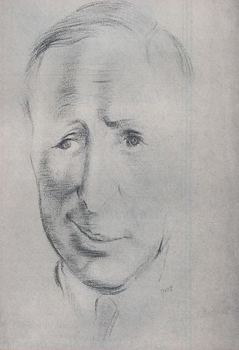Nationality American Role Author Name Thomas Craven | Children Richard Spouse(s) Aileen St. John-Brenon | |
 | ||
Full Name Thomas Jewell Cravens Occupation Author, lecturer, critic, art historian Notable work Men of Art and Modern Art: the Men, the Movements, the Meaning Books The Rainbow Book of Art, Modern Art: The Men, the Movements, the Meaning | ||
Polyester full fill finish thomas craven
Thomas Craven (January 6, 1888 – February 27, 1969) was an American author, critic and lecturer, who promoted the work of American Regionalist painters, Thomas Hart Benton, John Steuart Curry and Grant Wood, among others. He was known for his caustic comments and being the “leading decrier of the School of Paris.”
Contents
- Polyester full fill finish thomas craven
- Rti perf 50 air filtration system at thomas craven studios
- Life
- Writing career
- Works
- References
Rti perf 50 air filtration system at thomas craven studios
Life
He was born in 1888, in Salina, Kansas, the son of Richard Price and Virginia Bates Cravens. He graduated from Kansas Wesleyan University in 1908. He has been described as "a red-haired Kansan, as unassuming in private conversation as he is dogmatic on the printed page. He has been a reporter in Denver, a schoolmaster in California and Porto Rico (sic), a deckhand in the West Indies, an unsuccessful painter and poet." He was friends with numerous artists of his day including George Grosz and Thomas Hart Benton. He married Aileen St. John-Brenon, on August 25, 1923 and they were divorced in 1947. He summered in West Tisbury, on Martha's Vineyard and moved there permanently in 1949. He died in Boston, Massachusetts, on February 27, 1969, at the age of 81.
Writing career
He wrote numerous books, several were very popular including, Men of Art and Modern Art: the Men, the Movements, the Meaning both of which were Book-of–the-Month club selections. Another of his books, A Treasury of Art Masterpieces: from the Renaissance to the Present Day reached the bestseller list and was re-issued several times. In addition he contributed essays, articles and criticisms to numerous periodicals including, Scribners, Harpers, The Dial, The Nation, The New Republic, The American Mercury, and The Forum. At one time he was the art critic for the New York American. An example of his "no holds barred" writing comes from the Introduction to Modern Art; the Men, the Movements, the Meaning:
There is one exception – Modigliani. I have included this gifted wastrel as a specimen of the effects of Bohemianism on the artist. Modigliani was a real artist but not a great one. He had talent and charm, but was incapable of self-discipline. I have used him as a symbol of the multitudes of young men who go to the dogs in the slums of Paris.
However, despite the fact that he could be caustic, he was equally capable of providing praise. In describing John Steuart Curry's painting Baptism in Kansas, he says, "There was no burlesque in the picture, no satire, no sophisticated fooling. It was conceived in reverence and spiritual understanding, and executed with an honesty of purpose that is all too rare in any art."
Thomas Craven’s impact on the art world was significant. Any literature discussing the Regionalist painters makes reference to Mr. Craven’s work. He is discussed in Renegade Regionalists by James M. Dennis, John Steuart Curry's Pageant of America by Laurence E. Schmeckebier and Tom and Jack: The Intertwined Lives of Thomas Hart Benton and Jackson Pollock by Henry Adams. His influence is best described by the Time magazine’s review of his book, Men of Art:
Today the entire U. S. art world pays attention to him.
Works
Selected essays
Books
